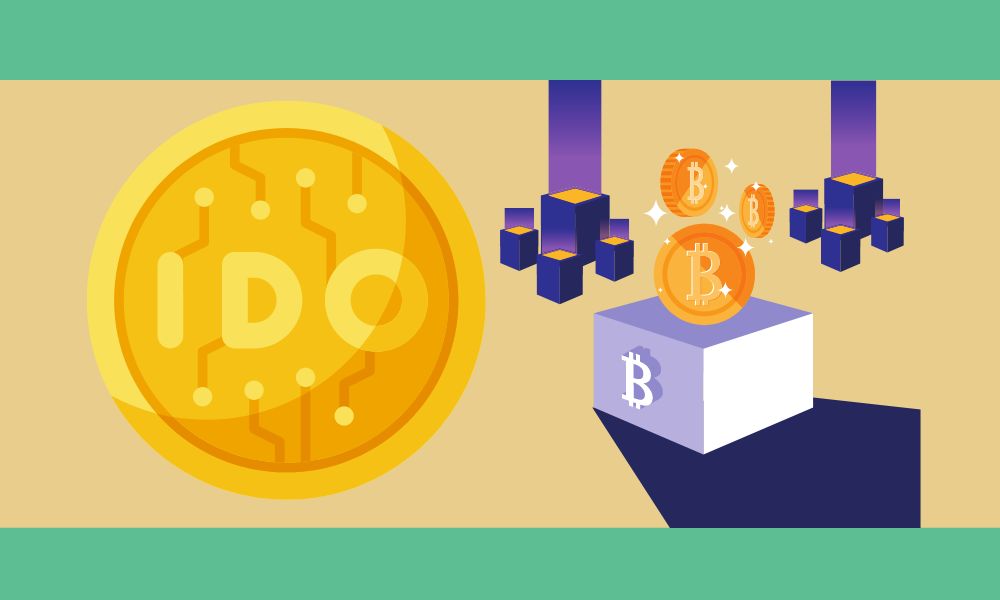
An IDO is a crypto token offering that takes place on a Decentralized Exchange (DEX). Liquidity pools (LP) play an important role in IDOs by providing liquidity after the sale.
During the token creation event, a typical IDO allows users to lock cash in exchange for fresh tokens.
Some of the monies received are then added to an LP with the new token before being returned to the project later.
IDOs allow projects to distribute their tokens in a low-cost and straightforward manner. IDOs have existed for some time, but they are continually changing and offering new models, such as the Initial Farm Offering (IFO).
As the industry gets more regulated, we may see more KYC requirements.
To participate in an IDO, you'll need a digital wallet like MetaMask as well as enough crypto to subscribe and pay transaction fees.
Always conduct your own research on the project and invest through a reputable DEX. This involves extensively scrutinising the IDO's mechanisms, as well as the project's personnel.
As usual, always invest what you are willing to lose because token offers are high risk.
The initial dex offering, or IDO, is a decentralised crowdfunding platform that provides a new approach for the crypto sector to raise capital.
Typically, this type of fundraising is accomplished by exchanging tokens representing various assets housed on a decentralised exchange (DEX).
When a project issues a currency or token via a decentralised liquidity market, IDOs are routinely carried out.
The Initial Dex Offering (IDO) is based on a liquidity pool where traders may exchange tokens, such as crypto assets and stablecoins, for one another. USDT/ETH is an example of a liquidity pair.
This technique, like the Initial Coin Offering (ICO), Security Token Offering (STO), and Initial Exchange Offering (IEO), is one of the most common crypto fundraising initiatives today.
IDO is a good choice for new DEX projects and entrepreneurs looking to swiftly distribute tokens and raise funds.
To support token sales, an IDO employs a decentralised exchange (DEX). The DEX receives tokens from a crypto project, users commit funds through the platform, and the DEX completes the ultimate distribution and transfer.
These procedures are automated and take place via blockchain smart contracts.
The rules and stages of an IDO are determined by the DEX that is executing it, although there are a few popular approaches:
1. A project is accepted to run an IDO on a DEX after a verification procedure. They provide a fixed quantity of tokens at a defined price, and consumers lock in their cash in exchange for these tokens. Later, at the token generation event (TGE), investors will get the tokens.
2. There is usually an investor whitelist. To join the list, you may be required to execute marketing chores or just submit your wallet address.
3. A portion of the money received is utilised to establish a liquidity pool using the project's token. The remaining money is distributed to the team. Following the TGE, investors will be able to trade the token. Typically, the offered liquidity is locked in for a set amount of time.
4. The tokens are transferred to the user at the TGE, and the LP is made available for trading.
IDOs have become a typical method of financing for many new initiatives in the crypto market as a result of their combination of ease of use, affordability, and accessibility.
In point of fact, initial coin offerings have developed into their very own business. In a nutshell, it is often safer to take part in a sale that is being conducted through a decentralised liquidity exchange rather than a project.
Nevertheless, selecting the appropriate project is a significant component of being successful in an IDO. When it comes to this, there is nothing in the crypto sector that can compare to a good, old-fashioned study.
How Can Traders Overcome Their Psychological Failings?
Why Is It Important To Understand Psychology In Markets?